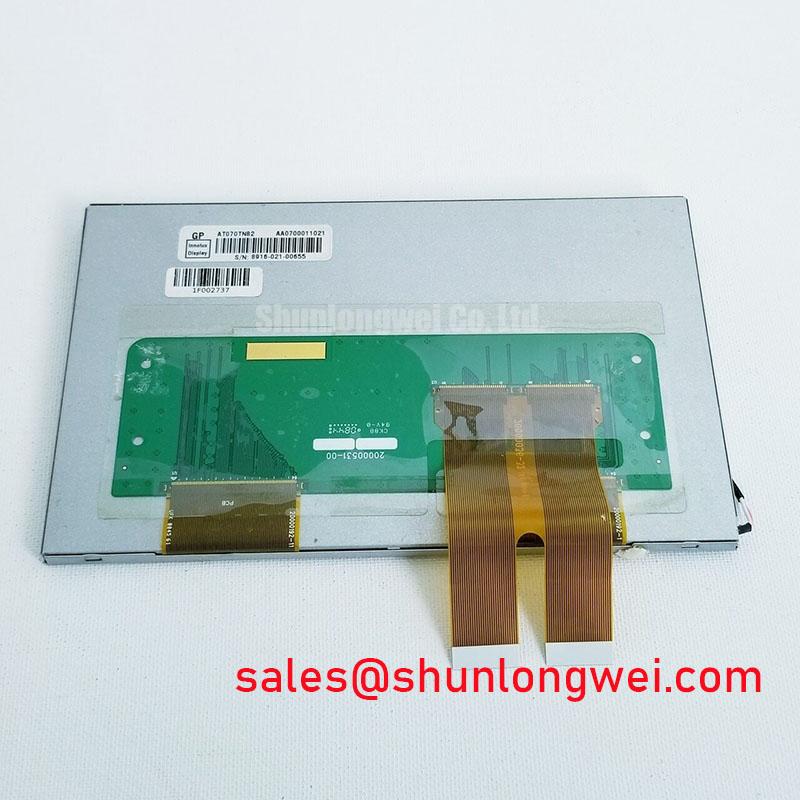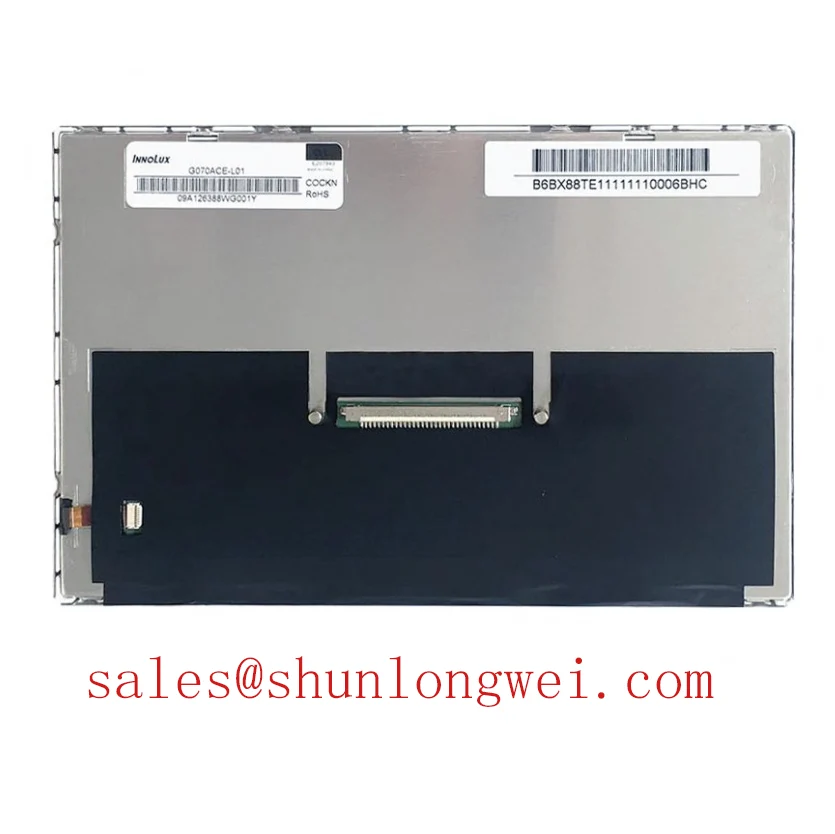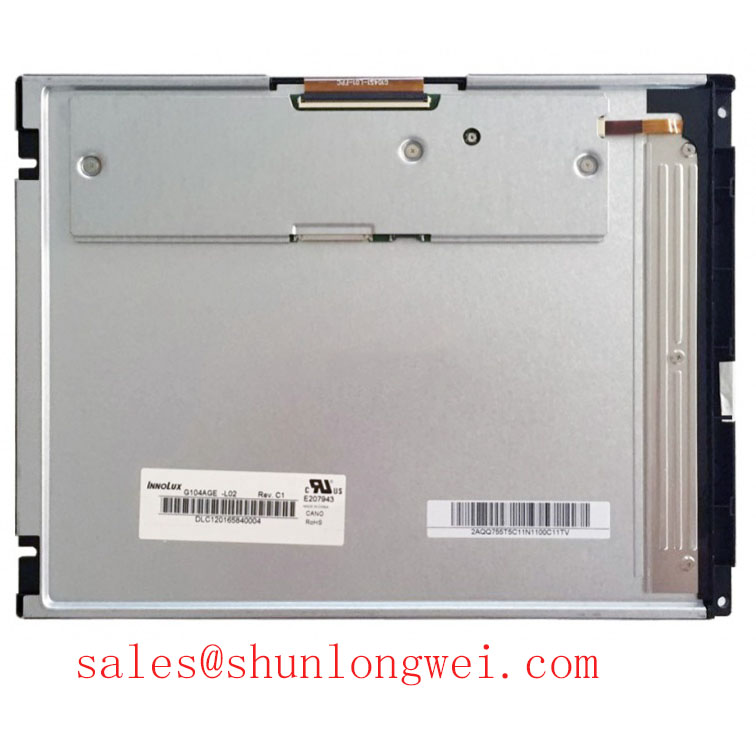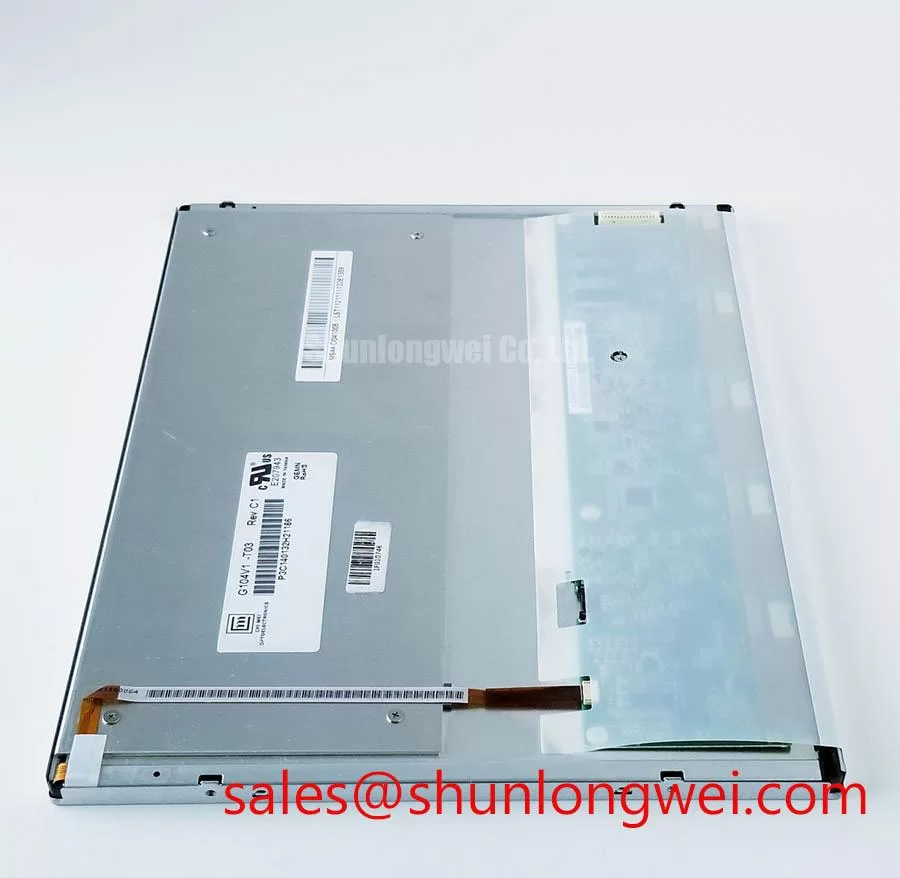AT070TN82 Datasheet, Technical Analysis: 7-Inch 800x480 Industrial TFT LCD
Engineering an HMI Workhorse
The Innolux AT070TN82 is an industrial-grade 7-inch TFT display engineered for straightforward integration and long-term reliability in cost-sensitive HMI and embedded systems. It delivers a core feature set focused on performance and durability, featuring key specifications of 800x480 WVGA resolution, 250 cd/m² brightness, and a -20 to 70°C operating range. The primary engineering benefits are simplified system integration and dependable performance across varied thermal environments. For control systems where development speed and operational robustness are critical, this display's standard parallel interface and industrial temperature tolerance make it an optimal choice.
Content last revised on October 9, 2025.
Key Parameter Overview
Decoding the Specs for Integration and Reliability
The technical specifications of the Innolux AT070TN82 are centered on providing a robust and easy-to-integrate display solution for a variety of mainstream applications. The following table highlights the critical parameters that design engineers and procurement managers should consider during the evaluation process.
| Feature | Specification |
|---|---|
| Screen Size | 7.0 inch |
| Resolution | 800(RGB)×480, WVGA |
| Display Technology | a-Si TFT-LCD, TN, Normally White |
| Luminance | 250 cd/m² (Typ.) |
| Contrast Ratio | 500:1 (Typ.) |
| Viewing Angle | 70/70/50/70 (L/R/U/D) (Typ.) |
| Interface Type | Parallel RGB (1 ch, 6/8-bit), 50-pin FPC |
| Backlight | WLED, 20,000 hours (Typ.) |
| Operating Temperature | -20 ~ 70 °C |
| Storage Temperature | -30 ~ 80 °C |
| Outline Dimensions | 164.9(W) × 100(H) × 6(D) mm |
Download the AT070TN82 datasheet for detailed specifications and performance curves.
Application Scenarios & Value
Achieving Robust Performance in Industrial and Commercial Devices
The AT070TN82 is purpose-built for applications where visual clarity, reliability, and ease of implementation are paramount. Its most significant value is demonstrated in the development of industrial Human-Machine Interfaces (HMI). What is the primary benefit of its wide operating temperature range? It guarantees stable operation in environments like factory floors or unheated warehouses, where temperature fluctuations can cause lesser displays to fail. The 800x480 WVGA resolution provides ample pixel density for displaying critical process data, status indicators, and soft-key controls without requiring the high-end processing power needed for HD displays. This makes system design simpler and more cost-effective.
In a high-fidelity scenario, an engineer designing a control panel for a packaging line can leverage the AT070TN82's standard Parallel RGB interface for direct connection to a wide array of microcontrollers and SoCs. This avoids the need for intermediate LVDS or MIPI converters, reducing component count, board complexity, and potential points of failure. The display's specified durability makes it a solid choice for portable instrumentation, medical monitoring equipment, and point-of-sale terminals where consistent performance is a non-negotiable requirement. While this model is ideal for many 7-inch designs, for applications requiring a slightly larger display area while maintaining a similar industrial feature set, the related AT080TN64 presents an 8-inch alternative.
Frequently Asked Questions (FAQ)
Engineering and Design Clarifications
What are the key considerations for interfacing with the AT070TN82's 50-pin Parallel RGB connector?
The primary consideration is ensuring the host processor's display controller is compatible with a parallel RGB interface supporting WVGA resolution. Pinout matching, signal integrity for the clock and data lines, and providing the specified analog and digital power rails (AVDD, VGH, VGL, DVDD) are critical. The datasheet provides a detailed timing diagram that must be adhered to for stable operation.
How does the TN panel technology affect the AT070TN82's viewing angles and ideal use cases?
The Twisted Nematic (TN) panel offers fast response times and cost-efficiency. However, its viewing angles are more limited compared to IPS technology. This is evident in the typical 50° upward viewing angle. Think of it like an older laptop screen that looks best when viewed straight-on but shows color or contrast shifts when viewed from a steep angle. This makes the AT070TN82 perfectly suited for fixed-position, single-operator devices like control panels or instrumentation, but less ideal for multi-viewer applications where wide viewing angles are required. Understanding this trade-off is key to optimizing total cost of ownership.
Is the 250-nit brightness of the AT070TN82 suitable for outdoor use?
With a typical brightness of 250 cd/m² (nits), this display is intended for indoor or deeply shaded environments. It is not a sunlight-readable panel. Direct or even bright ambient sunlight would wash out the screen, making it difficult to read. For indoor industrial settings, control rooms, or consumer devices used indoors, this brightness level provides excellent clarity and legibility.
Industry Insights & Strategic Advantage
Positioning for Longevity in Industrial and Embedded Systems
In an electronics landscape often dominated by the chase for higher resolutions and thinner bezels, the Innolux AT070TN82 represents a different strategic value: long-term stability and predictability. Unlike consumer-grade displays that may have a product cycle of a year or less, components for industrial automation and specialized equipment are expected to have longer availability and a consistent performance baseline. The AT070TN82, with its conventional and well-understood a-Si TFT-LCD technology, provides just that.
The panel's 500:1 contrast ratio is a critical parameter for its target applications. What does a 500:1 contrast ratio mean for an operator? It provides a clear distinction between the darkest and brightest parts of the image, ensuring that text, numbers, and GUI elements are sharp and unambiguous. This is analogous to the difference between seeing a charcoal gray mark versus a deep black mark on a light background; the higher contrast of the latter makes it instantly readable, which is crucial for reducing operator error in a fast-paced HMI environment. This focus on functional clarity over peak specifications is a hallmark of industrial design and is a core strength of displays manufactured by firms like Innolux and AUO.
For OEMs, sourcing a display like the AT070TN82 is a strategic decision that prioritizes supply chain stability and reduces the risk associated with frequent redesigns. Its feature set is a deliberate balance of proven technologies, providing a reliable foundation for products that are themselves built to last. This philosophy ensures that the end-product, whether it is a piece of portable instrumentation or a factory control system, can be supported and maintained for years to come without concerns about the core display component becoming obsolete.











